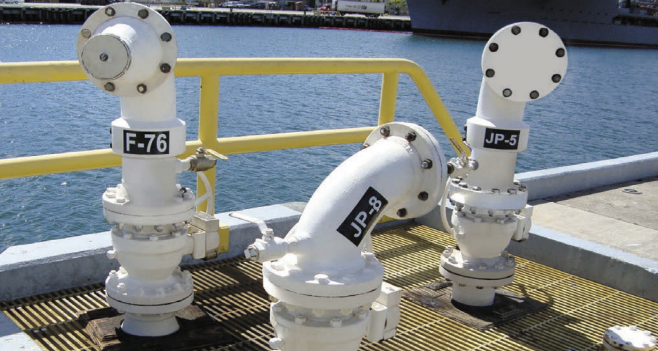Despite their opposing functions, stationary pipes and rotating machinery have to work in harmony to maintain operations for chemical processing, wastewater treatment and other fluid handling or dry bulk applications. To keep piping in place while allowing
for range of motion, engineers have turned to swivel joints.
Swivel joints provide a smooth connection to protect against machinery breakdown. This
lengthens machine element lifetime and reduces maintenance and downtime, a worthwhile investment in the long-term success of a plant. While adding these joints to loading, unloading and processing assemblies is easy to see as a net positive, the selection
process can be complex. Our team isolated three factors that should influence your thinking when considering swivel joints.

Design Parameters
Pressure, temperature and supported weight are all essential factors in selecting a swivel joint. If a joint isn’t built to handle the demands of the specific environment or application you are working with, leakage or machinery failure
are possible if not inevitable. Corrosiveness of the fluid must also be considered, as it will affect the lifespan of the joint.
Construction
The array of joint sizes, seals and connections is almost endless. These options are expanded even further by the availability of several metal options. Engineers can choose from carbon steel, stainless steel, brass, aluminum, bronze or ductile iron
along with a compatible seal material to meet job and functionality requirements.
Application
The most common swivel joint applications include loading arms, hose reels, steel mills, dock hoses, fire fighting equipment, machine tools, filtration equipment, wastewater treatment, aviation ground support equipment, tank trucks and drum fillers. Each of these applications comes with a different set of requirements.
For example, loading arm joints must handle fluid loading for tank trucks and rail cars with a wide range of motion, and dual split flange swivels have to provide durability for the transfer of acids, solvents, petrochemicals and other toxic fluids.
Engineering What’s Next in Custom Chemical Transfer Equipment
OPW Engineered Systems is experienced in designing and manufacturing swivel joints for all kinds of equipment. We consult with design, plant and maintenance engineers to deliver an appropriate swivel joint solution, specifically tailored to your application.
To learn more about the full line of OPW Engineered Systems’ terminal solutions, please visit opw-es.com or contact OPW Engineered Systems